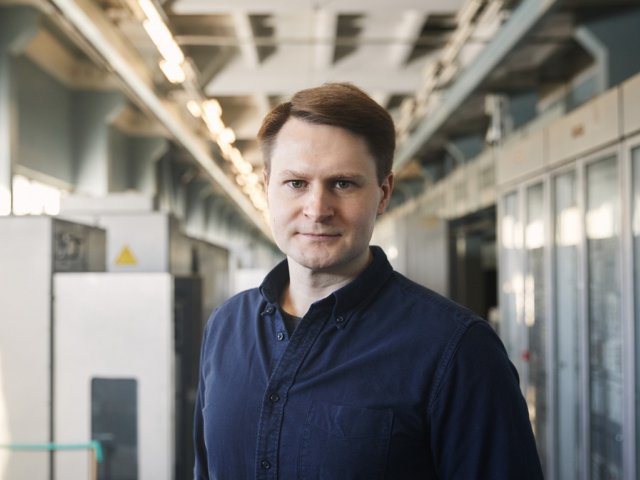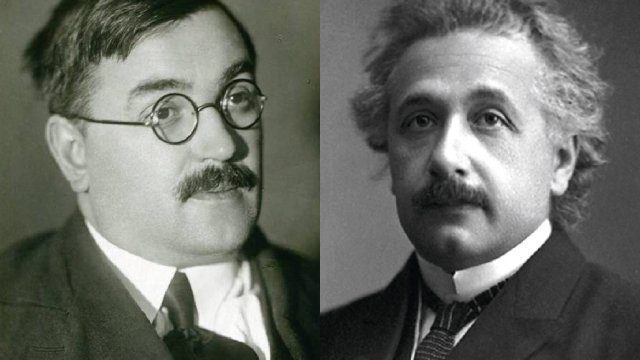Official:
Wolfgang Ernst Pauli. April 25, 1900 – December 15, 1958. Swiss theoretical physicist who worked in the field of elementary particle physics and quantum mechanics. Winner of the Nobel Prize in Physics.
Life and Work:
1. “Today I have done something which no theoretical physicist should ever do in his life,” the scientist complained, “I have predicted something which shall never be detected experimentally!” In a desperate attempt, in his words, to save the law of energy conservation, the creator of quantum mechanics, Wolfgang Pauli, suggested the existence of an unknown electrically neutral particle in the nuclei.
2. A son of chemistry professor Wolfgang Josef Pauli and his wife, journalist Bertha Schutz, the godson of the famous physicist and philosopher Ernst Mach was considered a child prodigy. They say that one day during a physics class at the Vienna gymnasium, the teacher, desperate to find a mistake in what he wrote on the blackboard, exclaimed: “Pauli, tell me at last what the mistake is! You must have found it long ago.”
3. As a student a University of Munich student, 20-year-old Pauli wrote a 237-page article on general relativity for the Encyclopedia of Mathematics. This monograph is still considered a classical piece, and this article earned the young scientist European fame.
4. After defending his doctoral dissertation, Pauli made a trip across the European scientific centers of that time. In Göttingen he worked as Max Born’s assistant, in Copenhagen – as Niels Bohr’s assistant. There, Pauli successfully complemented the theory of the atom: he came to the conclusion that instead of orbits of rotation of electrons around the nucleus, it would be more correct to talk about shells that the electrons form around it.
5. Pauli’s real moment of glory came during his time at the University of Hamburg. In 1925, the scientist discovered a new quantum number, which would later be called spin, and formulated one of the most important principles of modern theoretical physics – the Pauli exclusion principle, which explained the structure of the electron shells.
6. “For the decisive contribution through his discovery of a new law of Nature, the exclusion principle or Pauli principle,” was the verdict of the Nobel Committee, which awarded Pauli the Nobel Prize in Physics in 1945.
7. If the Hamburg period was marked by the discovery of the Pauli exclusion principle, then the neutrino hypothesis was put forward when he was a professor at the Higher Technical School in Zurich. In Zurich, Pauli worked for the rest of his life, except for the war years: during World War II he worked at the Institute for Advanced Study in Princeton.
8. On December 4, 1930, Wolfgang Pauli sent a letter to a group of, as he aptly put it, radioactive people in Tübingen. The radioactive pun was appreciated, because they gathered in this southern German city to attend the International Conference on Radioactivity. The letter did not surprise them: Pauli rarely published his works, but often wrote letters in which he shared his discoveries with his physicist friends. It was in this letter that the scientist suggested the existence of what he called a “neutron” in the nuclei.
9. Pauli was wrong about the experimental verification: it was checked and confirmed, although much later. However, a different particle was called neutron; and the one predicted by Pauli was named “neutrino,” that is “a small neutron,” by Enrico Fermi. The neutrino and its fantastic penetrating power impressed the American writer John Updike so much that he dedicated a witty poem Cosmic Gall to this particle:
Neutrinos, they are very small.
They have no charge and have no mass
And do not interact at all.
The earth is just a silly ball
To them, through which they simply pass.
10. At the Institute for Advanced Study in Princeton, Pauli, among other things, worked alongside Einstein on general relativity.
11. “It was absolutely marvelous working for Pauli, wrote the scientist Victor Weisskopf, who worked with Wolfgang Pauli for a long time, “You could ask him anything. There was no worry that he would think a particular question was stupid, since he thought all questions were stupid.”
12. Wolfgang Pauli had his own signature effect. Malfunctions of devices occurring in presence of the famous physicist was jokingly called “The Pauli Effect.” One day, his colleagues played a prank on him. They connected the clock in the hall where Pauli was supposed to speak to the door with a transmission mechanism. They expected the clock to stop as soon as the door would open. However, the clock did not stop – the transmission mechanism failed.
13. After divorcing with his first wife, Pauli was depressed. It was then that he met the psychologist Carl Jung and became friends with him for life. From the letters they exchanged until the last days of Pauli’s life, we know that the great physicist almost co-authored the concepts that Jung introduced into science.
14. The perfectionist Pauli was referred to as “the conscience of physics.” He could comment on his own or other people’s work as follows: “That is not only not right; it is not even wrong.” Colleagues joked that he could criticize even God.
15. At the International Congress on Nuclear Physics, which was held in Rome in 1931, Pauli had to shake hands with Mussolini. The scientist recalled this with disgust.






















